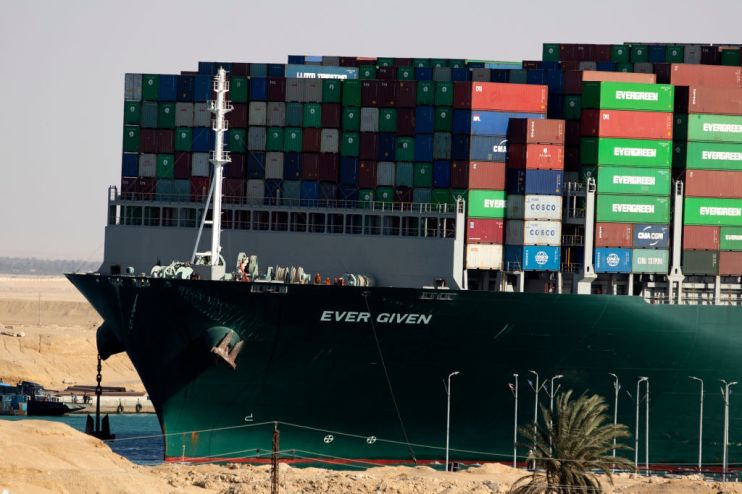50 days after the Ever Given blocked the Suez canal, supply chains still have not recovered

On the 29th of March, tug boats and dredgers freed the Ever Given from the banks of the Suez Canal. In just six days the blockage obstructed over $60 billion of global trade, sending disruptive ripples to every corner of the world.
The beached container ship, weighing in at 220,000 tonnes and longer than the Empire State Building is tall, became an instant focus for the international media. Wedged across the canal, surrounded by comparatively tiny diggers attempting to dislodge it, the ship became a social media phenomenon. By blocking one of the world’s most important trade arteries, the Ever Given placed the global supply chain, so often overlooked, into the spotlight. For many consumers, it was the first time they had truly considered the complex ecosystem that delivers goods to our doorsteps at the click of a button.
Fifty days later, the media has moved on, and the memes have dried up. But the effects of the crisis still rumble on. Experts estimate the situation won’t be back to normal until late June. That means the week-long blockage has created at least 10 weeks’ worth of damage, thanks to the complexity and interconnectedness of global trade. Delayed ships (and the containers stuck on them) have meant interrupted or even cancelled sailings, making it harder and more expensive to secure space onboard. And when we no longer feel the effects of the blockage, the ‘normal’ we’re working back to is a far cry from where we were even a year ago.
To the casual observer, what happened in Suez may seem like a once-in-a-generation disturbance, a freakish accident that disrupted an otherwise-faultless system. In reality though, this was yet another strain on an already burdened industry.
Global demand for deliverable goods has skyrocketed. As national lockdowns drastically limited the services and experiences available (such as holidays, or going out to restaurants), people have bought more physical goods. Many have taken the opportunity to renovate their kitchen or stock up on gardenware.
The supply chain has borne the brunt of this radical change. Higher demand for goods means higher demands on manufacturers and the freight industry. Getting space on container ships has become more competitive than ever, with prices soaring: the cost of shipping containers has tripled since this time last year, according to the Freightos Baltic Index. Alongside, Covid-related staffing issues at ports and post-Brexit disruptions, the Ever Given was a boiling point for an already combustible issue.
Historically, logistics teams have been undervalued parts of an organisation, often eclipsed by their flashier siblings in purchasing, marketing, and sales. But now, in the face of unprecedented demand surges and supply shortages, the importance of effective, reliable and transparent supply chains has never been clearer.
Supply chains are the cornerstone of ensuring that consumers’ needs are met. If a product does not make it to its destination on time, you can assume that the customer will shop elsewhere, and possibly for good. According to IBM, over 60 per cent of companies expect competitors with better supply chain management to overtake them within the next three years. Against a backdrop of uncertainty in global trade, those that pay attention to their own logistics operations will have a competitive advantage.
The disruptions of the last year have made us much more conscious of how things get from A to B. We shouldn’t need another sensational news story like the Ever Given to remind us of the importance of the supply chain. After all, the companies that pay closest attention to this part of their business will reap the benefits for years to come.